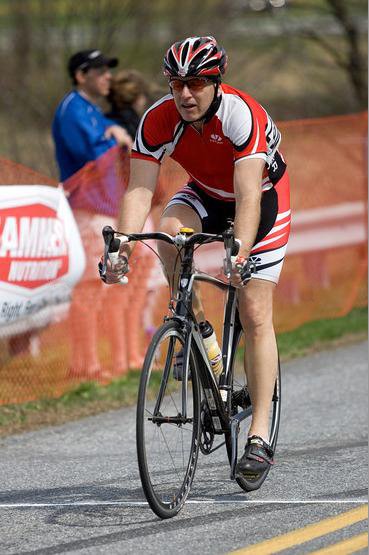If you've ever owned a high performance car with low-profile tires you'll know that the ride is not as comfortable as say a regular sedan with narrower tires. That's because the low-profile tires are built for performance/handling- not comfort. Same thing with bike tires.
The majority of bikes sold pre-2016 were sold with stock 700x23c bike tires mounted on 15mm rims. The 700 tire number is the diameter of the tire in mm, the 23 tire number is the tire width in mm (un-inflated). So, based on what I said earlier, why doesn't everyone just go out and buy wider tires for their current bikes? The problem with that is when you put a wider tire on a narrower rim you create turbulence from the wind which negates any of the rolling resistance advantage. When wind hits the front (or slightly from the side) of the wheel, you want it to hug both the tire and the rim (as shown on the bottom right view). You can see that with the wider tire and narrower rim below (on the bottom left) the wind separates from the rim causing turbulence.
That's why the trend these days is towards wider rims and wider tires. So, if I have a 700x23c tire mounted on a 15mm rim, is there anything I can do to reduce the deflection and decrease rolling resistance making me go faster? Yes, there is, you can slightly reduce the amount of pressure in your tires. When I first started riding 15 yrs. ago (and using 700x23c tires) everyone pumped their tires up to 120 psi right before their ride. The belief was the harder the tire the less tire to road surface area contact and the lower the rolling resistance. Today we're smarter, we know that by lowering the tire pressure (down 5-10 psi) we can reduce the amount of deflection, decreasing rolling resistance and making us go faster. Here is a chart from Michelin with recommended tire pressure based on wheel/tire size and rider weight. You can see that the wider tires allows the tire pressure to be lowered almost 15 psi for the same rider weight:
The benefit of lowering the tire pressure is increased comfort. You may not notice that comfort increase on a 20-30 mile ride or in a short race, but you'll definitely notice it for a century ride or longer race. Instead of pumping my tires up to 120 psi, like I used to, I keep them between 105-110 psi (I weigh 160 lbs.). I definitely notice more comfort. I'm not sure I notice any more speed from decreased rolling resistance. But, I'm not supposed to because when we talk about going faster, we're talking only seconds in a 40k TT.
Also, with the wider tires (that have shorter sidewalls) comes better bike handling, just like an high performance car with low-profile tires.
Power ON! Coach Rob








No comments:
Post a Comment